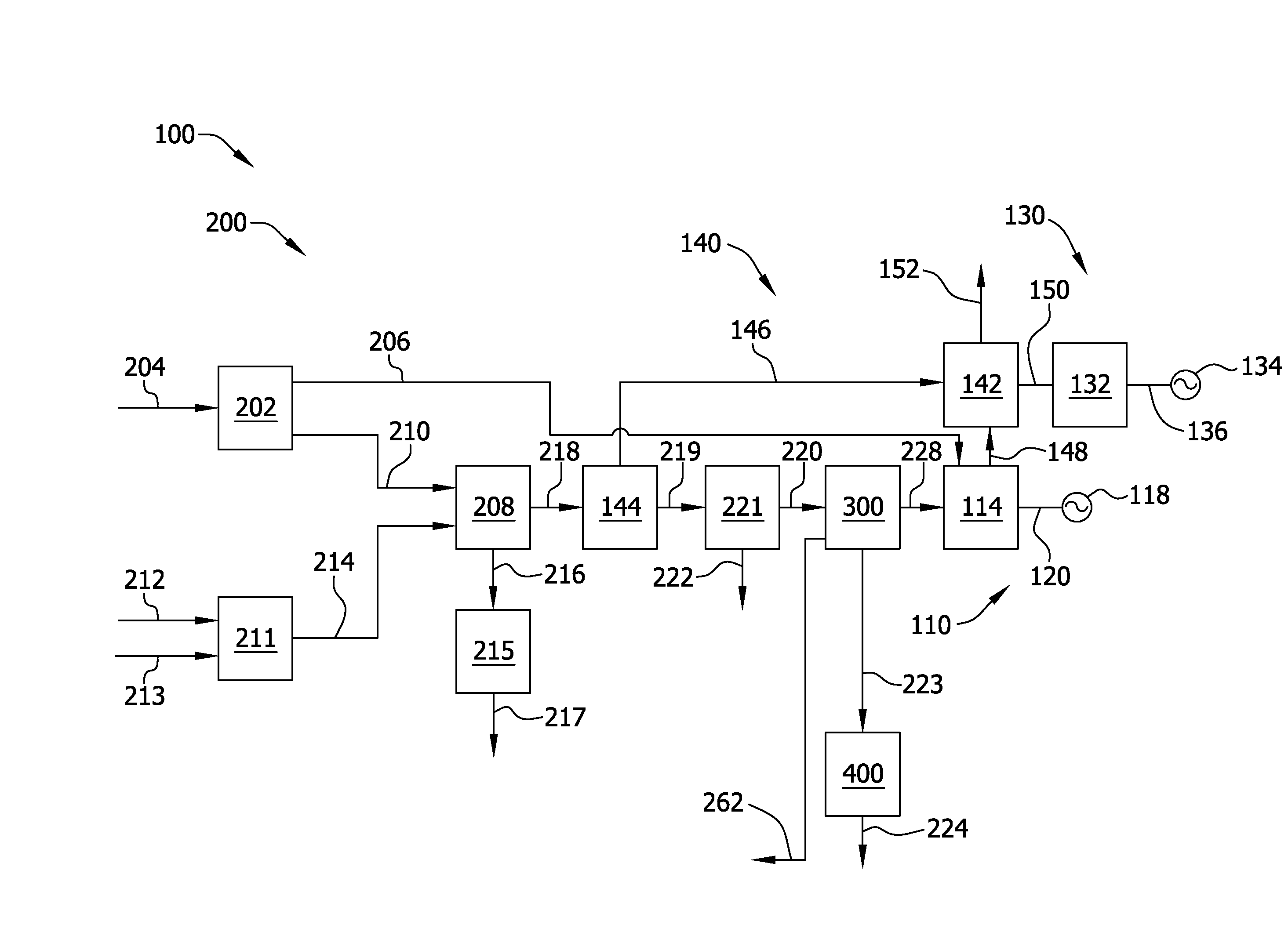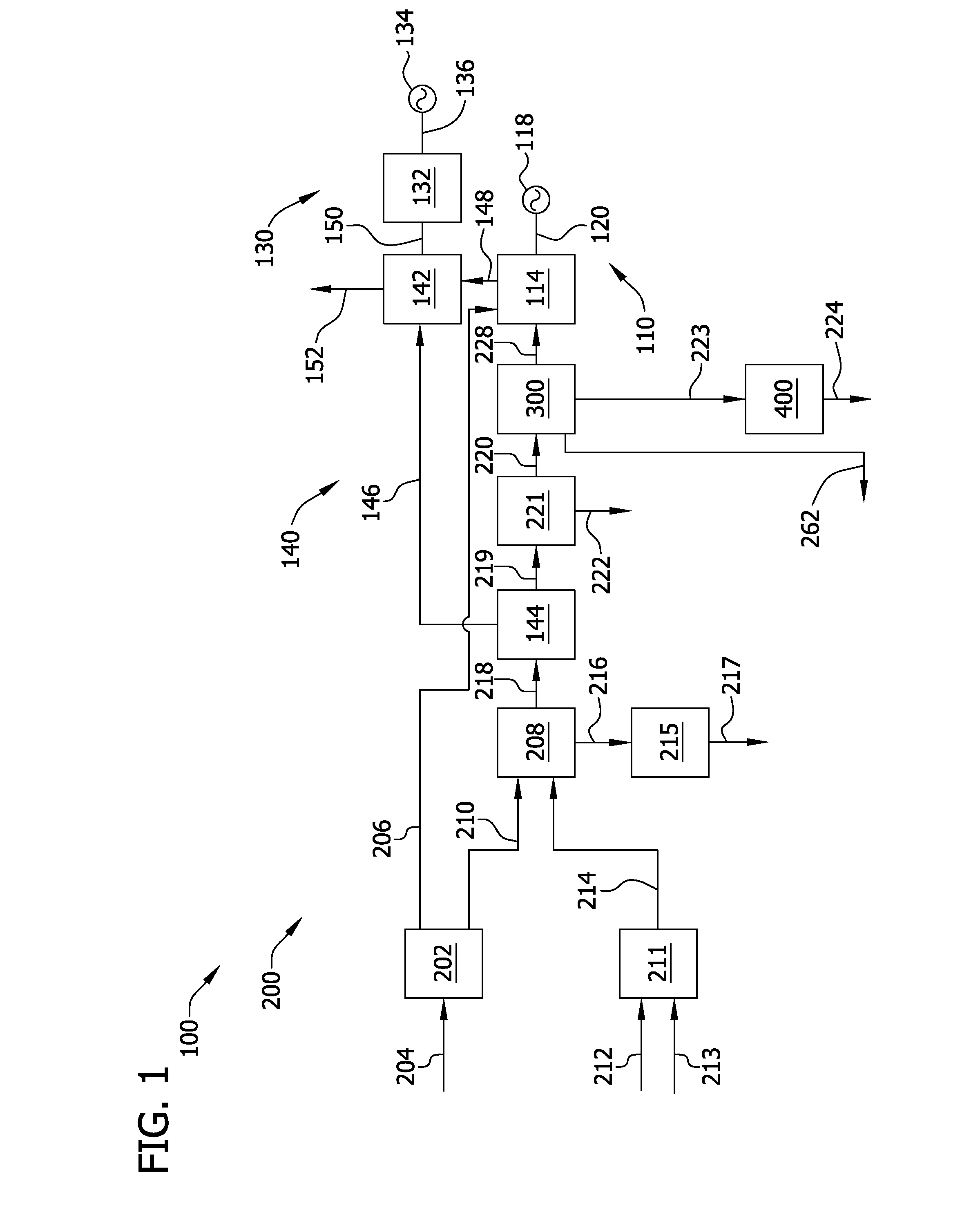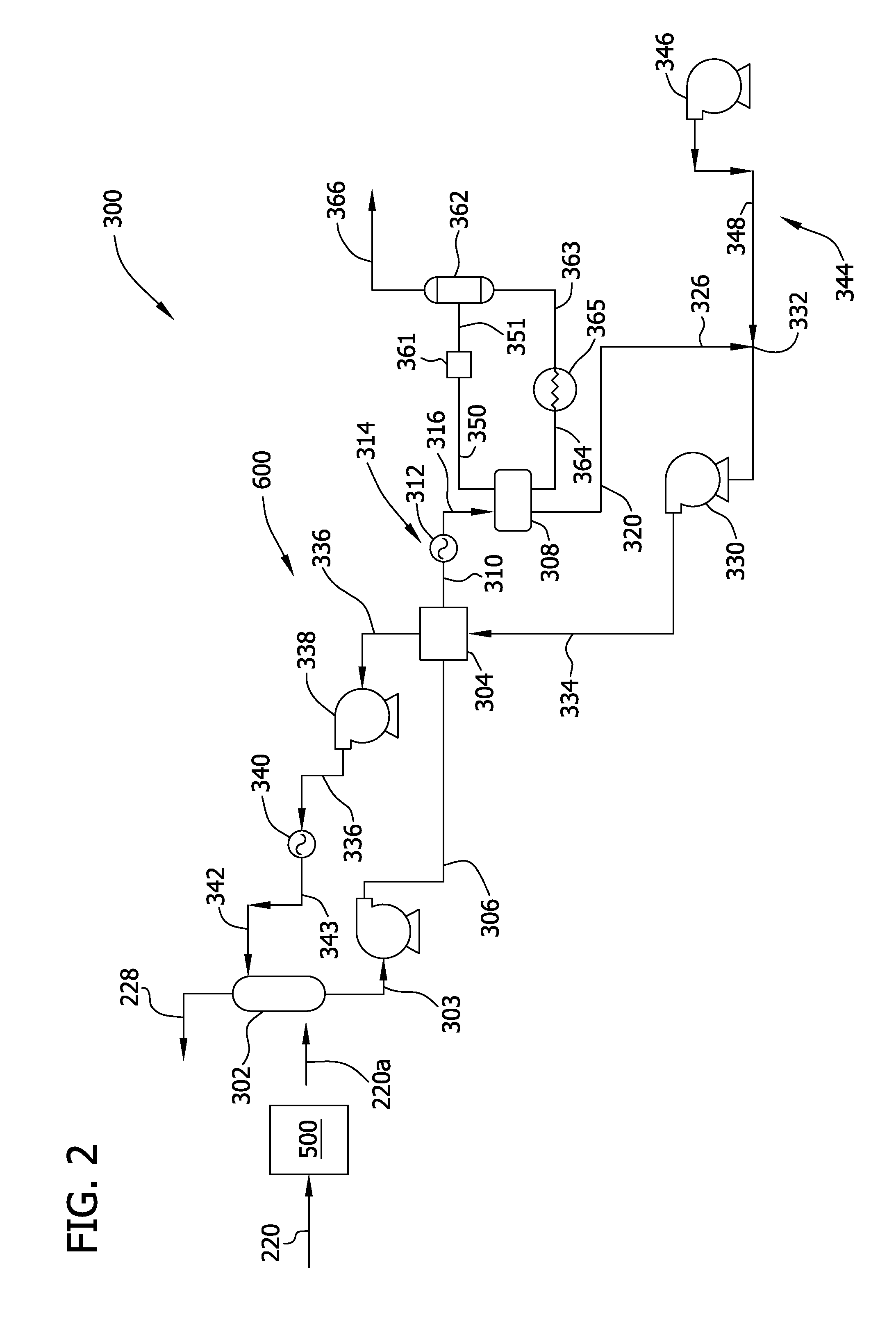Carbon dioxide removal from synthesis gas at elevated pressure
a technology of synthesis gas and carbon dioxide, applied in the direction of gaseous fuels, liquid degasification, separation processes, etc., can solve the problems of acid gas including cosub>2 /sub>recovering at low pressure, conventional removal processes are not adequate, and the process is typically not as efficient, so as to avoid the capital and operating expenses of compression
- Summary
- Abstract
- Description
- Claims
- Application Information
AI Technical Summary
Benefits of technology
Problems solved by technology
Method used
Image
Examples
example
[0054]In this example, TEA was evaluated for its ability to absorb CO2 from a raw syngas stream, substantially free from H2S, under various temperature and pressure conditions that occur within a typical HPCDR subsystem of an IGCC plant.
[0055]Specifically, a raw syngas stream was channeled to a liquid gas contactor including an acid gas-lean triethanolamine (TEA) solvent. The raw syngas stream was first contacted with the acid gas-lean TEA solvent isothermally at a temperature of about 25° C. and under CO2 partial pressures ranging from about 500 kPa to about 1800 kPa, represented by the area between B and C in FIG. 4. In order to maintain this temperature intercooling will be provided to the adsorber. The ability of the acid gas-lean TEA solvent to absorb the CO2 under these pressures at 25° C. to form an acid gas-rich solvent was observed on the abscises of FIG. 4. Under these conditions, the solubility of CO2 in the TEA is found to be in the range of from 0.9 to 1.0 moles CO2 per...
PUM
| Property | Measurement | Unit |
|---|---|---|
| temperature | aaaaa | aaaaa |
| total pressure | aaaaa | aaaaa |
| temperature | aaaaa | aaaaa |
Abstract
Description
Claims
Application Information
 Login to View More
Login to View More - R&D
- Intellectual Property
- Life Sciences
- Materials
- Tech Scout
- Unparalleled Data Quality
- Higher Quality Content
- 60% Fewer Hallucinations
Browse by: Latest US Patents, China's latest patents, Technical Efficacy Thesaurus, Application Domain, Technology Topic, Popular Technical Reports.
© 2025 PatSnap. All rights reserved.Legal|Privacy policy|Modern Slavery Act Transparency Statement|Sitemap|About US| Contact US: help@patsnap.com



